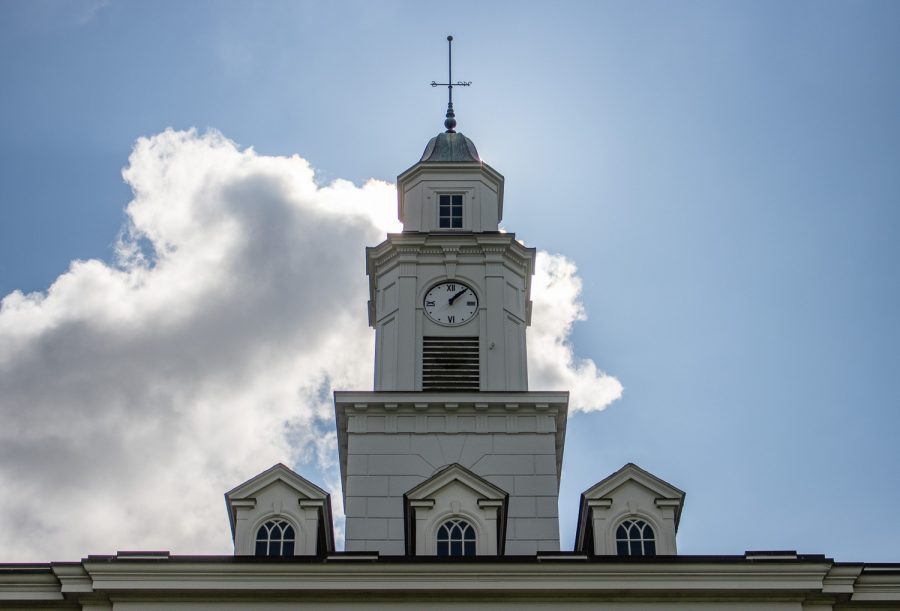Will You Be Able to Come to Campus This Fall?
Finally, after months away from the Lakeside community, students will get some semblance of in-person connection this fall. As the administration decided in early September, students will have the opportunity to travel to campus to participate in masked and distanced advisory group meetings while Lakeside is on a remote learning model.
There is one important caveat to participation in the Lakeside on-campus advisory plan: the much-discussed (and criticized) Lakeside Bubble. The Lakeside Bubble is meant to contain interactions within the Lakeside community. If no one within the school interacts with anyone outside the school, ideally, Lakeside should be a COVID-19-safe environment, where risk of contracting the virus is minimal to none. However, this means that students who participate in outside activities, including club sports, volunteering, jobs, and other in-person extracurriculars, will not be able to come to campus.
The student body has questioned the idea of a Lakeside Bubble. Many students have brought up that they have parents and siblings who go to work and go to schools outside of Lakeside; it is likely not realistic for them to stop those responsibilities for the student to attend Lakeside in person. Others may also argue that the risk of contracting the coronavirus at a minimal-contact club sport practice is similar to going to get groceries or picking up takeout. In minimal-contact sports, such as cross country, golf, or tennis, it is possible to not come within six feet of teammates or coaches during practice. As Mr. Noe mentioned in his reopening letter, the risks taken must be minimal and essential, and parents and siblings outside the bubble are essential parts of risk factoring, while elective activities are not. To those who are unable to come to campus and see the rationale for who is and isn’t allowed to come as arbitrary, the rules can be frustrating.
The Bubble will be maintained for in-person advisories, and students who want to go on campus must test negative for COVID-19, cease any out-of-school activities one week prior to coming to school, wear a mask while at school, and remain physically distanced. Students who don’t meet those criteria can still participate in the advisory sessions remotely through Zoom. “We’ll have to develop a sort of curriculum that works both for people who will be participating in person and people who will be phoning in,” said Ms. Maiorano, Upper School Assistant Director. As for the advisory activities themselves, there are multiple plans set in place to accommodate blended learning formats.
According to Ms. Maiorano, the focus of reopening is on student “bonding at the beginning of the year and getting back into the groove of being in their groups.” She added that advisories are much easier to bring back to campus than academic classes because of their small size — most are 10 people or fewer. In addition, advisories are seen as family-like groups, and thus are obvious areas to facilitate bonding through games, projects, challenges, and other activities. Community building will be an essential part of Lakeside’s hybrid/remote model this year, and advisory will be the main conductor of bonding.
In addition to relationship-building, the advisory plan will incorporate more serious topics. “With the older kids, we’ll probably do some stuff around stress relief,” Ms. Maiorano said, “and eventually, we’ll do some things that have more to do with racial equity and TBH-like conversations.”
For students who may not be able to get to campus on their own, Lakeside is looking into transportation options. If needed, spaces are available so that students can attend remote classes on campus for the whole day. Lakeside’s minibuses will do pickups by neighborhood, and in some cases, there will be rideshares available. “For kids who can’t get here but want to be here,” Ms. Maiorano said, “we will do everything in our power to make sure they are here.”
As the advisory sessions are 90 minutes long and will be held on campus, it is inevitable that students will miss some or most of their classes on Wednesday. To minimize stress, teachers have been asked to not assign more than 30 minutes of asynchronous work per Wednesday class, and to not assign any homework to be due on Wednesdays. Hopefully, the limits on assignment length will mitigate any additional stress on students and allow them to enjoy the in-person experience to their fullest.
On March 8th, 2020, very few of us thought we wouldn’t be back at school in the fall. In fact, many of us probably thought we’d be back at school at the original return date, April 13th, or at least before the end of the school year. Little did we know that six months, millions of cases, and hundreds of thousands of preventable deaths later, we’d have to start school as we ended it: on Zoom. Finally, there is a glimmer of hope that we might return to the on-campus community we once knew, but it will not truly be the same. With a portion of the student body shut out of in-person learning and very little intergrade interaction in the hybrid model, it seems that in-person learning will be nothing more, without the bells and whistles that come with an on-campus Lakeside experience. It is not ideal, but really, what about this pandemic is? Still, the fact that in-person advisories can happen is a step in the right direction towards having the entire student body on campus in the near future.

